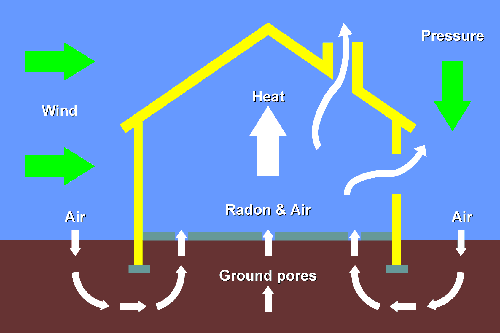








Mold Testing
Mold is a microscopic organism that lives on organic matter and reproduces by means of spores. Indoors, mold is unsightly, smells
bad and can destroy the structural integrity of your home or business.
Mold is harmful to the touch, even when dead, due to toxins found on the spores, which are released into the air when disturbed. Mold can cause severe allergic reactions such as coughing, eye irritation, sinus congestion, headaches and, in people with asthma, more severe symptoms.
Our fully certified mold inspectors are trained to look and smell for signs
of mold, water damage, excess humidity and lack of ventilation. They will inspect every area, looking for excess moisture, condensation or
potential leaks.
If mold is visible, our inspector will sit down with you and discuss the findings, the remediation techniques best suited for your particular
needs, the time it will take and the cost involved.
If mold is not visible, air samples will be taken to determine what types
of mold are present and at what levels. We offer two types of mold
sampling – swabs and air sampling.
Swab samples: Swab samples can be taken from any surface and submitted for analysis. Although an easy way to sample areas for mold, the presence of tiny matter on a particular surface is not a direct
indication of what may be present in the air.
Air Testing: Air sampling involves forcing a specific amount of air through a sampler which pushes air onto a collection device. This device is then sent to a certified laboratory for analysis. Air sampling can determine
if elevated levels of mold exist because they reveal the types of mold present and the levels. An outdoor sample is also required as a baseline
of what is naturally occurring around your property. When the level of mold indoors is greater than outdoors, it indicates a problem is present, such as mold growth from a leak in the roof, foundation, plumbing or other source.
Radon Testing
Radon, an indoor air pollutant, is a colorless, odorless radioactive gas. It comes from naturally occurring uranium in soil. The only way to tell how much radon you have in your house is to test.
Radon is the leading cause of lung cancer among non-smokers. As many as 1.160 Illinois citizens are estimated to develop radon related lung cancer annually. The Surgeon General of the United States stated "breathing radon over prolonged periods can present a significant health risk to families all over the country." The USEPA recommends that indoor radon levels be below 4.0 picocuries per liter of air.
Most Radon enters a home because of air pressure and temperature difference between the home and the outside air. When air is vented from buildings by natural or powered ventilation, radon and other soil gases are drawn in from the surrounding soil through openings between the house and the soil.
There are reliable ways to measure indoor radon for short-term test periods that last only a few days, and for long-term test periods that may range from a few months to more than a year. Using recommended measurement devices, you can determine the radon potential of the home under "worst case conditions" (short-term test), or measure actual radon exposure under normal living conditions, (long-term test).
Short-term tests are typically conducted over a two or three day period. Results of short-term tests represent the radon potential of the home, rather than the actual exposure encountered under normal living conditions, unless residents keep the home's windows and doors closed year-round. That's because EPA guidelines for short-term radon tests require "Closed-House Conditions," to promote maximum radon concentration during the brief test period.
The placement of the device within the home must follow the manufacturer's instructions and is dependent on whether or not the test is being conducted for a real estate transaction.
Short-term tests are usually 2 to 7 days long and are done under "closed-house" conditions that begin at least 12 hours before the test and remain in effect for the duration of the test.